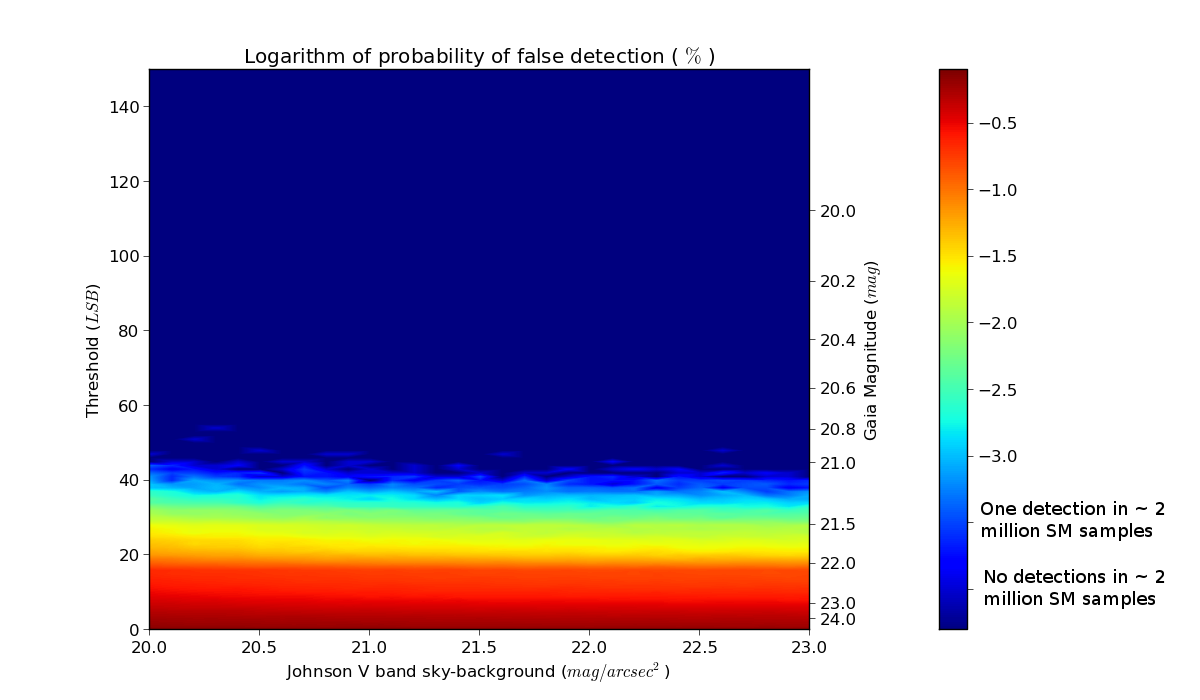|
The background of the starry sky seen by Gaia is not completely dark. The brightness of this background is typically V = 22.5 mag/arcsec2, with a spectrum of a G2V star. The first part of the focal plane assembly touched by the incoming light is the Sky Mapper (SM). It registers objects which have a flux larger than a certain, user-defined threshold and assigns them a virtual "window" for the next portion of the focal plane if they pass the detection algorithm. Each sample of the CCD in the SM is subject to different noise sources. The principal components are photon noise, dark noise, and read-out noise. A localized noise spike can resemble a faint star and hence lead to a false detection.
This image shows (in a logarithmic scale) the percentage of these unwanted detections, called sky-background-induced false detections. For each flux threshold (step of 1 LSB between 0 and 60 LSB and a step of 7.5 LSB after) and for each Johnson V-band sky-background between 20 and 23 mag/arcsec2 with a step of 0.1 mag, we construct an area equal to the Gaia CCD height (983 across-scan samples) and spanning 4.026 seconds of Gaia scanning time (2048 along-scan samples) containing sky background plus all noise sources. We then run this image through an emulated version of the on-board detection algorithm in the Video Processing Algorithms (VPAs). We find no significant sky-background-induced false detections using a faint-magnitude threshold brighter than G ~ 21 mag for any sky-background brightness between V = 20 and 23 mag/arcsec2. This confirms that Gaia's object-detection performance at G = 21 mag will not be threatened by false detections due to the brightness of the sky background.
|








































 Sign in
Sign in
 Science & Technology
Science & Technology

